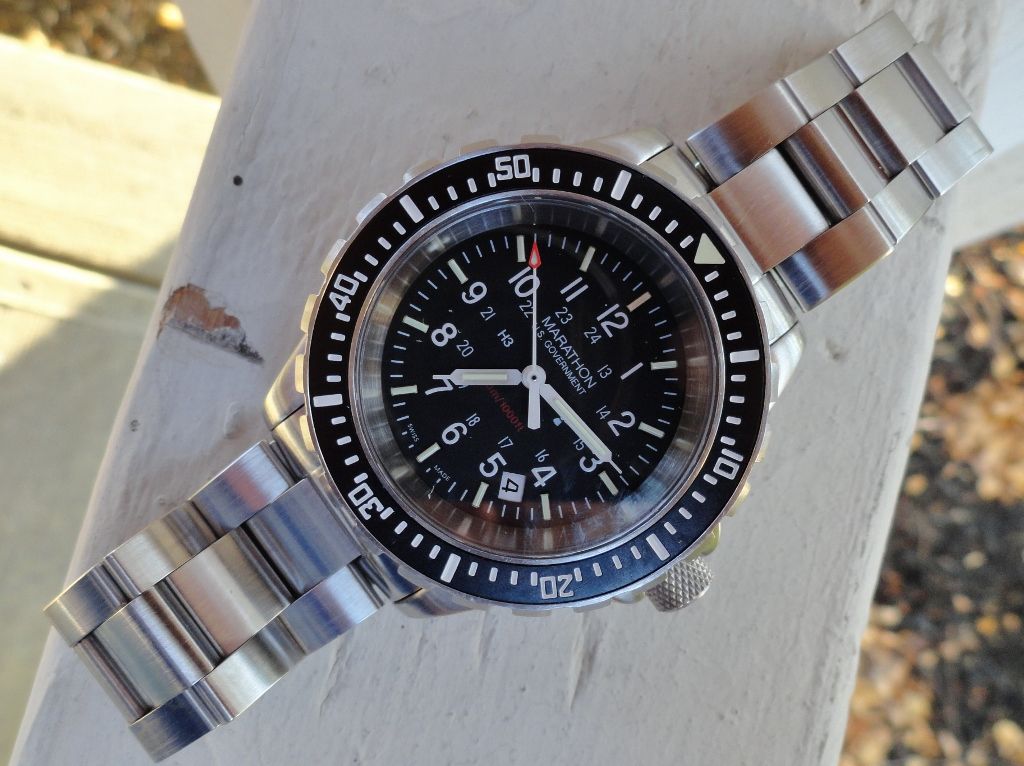The watch on review today is perhaps the finest and least expensive example in Hamilton's present collection: the Field Khaki Hand Wind (currently listed as the Officer Handwinding on Hamilton's website), reference number H69419363. Its simple three-hand design reflects a functionalist and spartan outlook that meshes well with its military aesthetic. At 38mm in diameter, it is well positioned as an understated timepiece that could be easily dressed up with a leather strap or matching bracelet (more on the latter below). Its 20mm lug width ensures that it is compatible with a wide range of aftermarket straps, and the drilled lug holes are an increasingly rarefied feature that makes strap changes a breeze and further cements the watch's function-first aesthetic. The watch comes in a black dial and an olive drab dial, the latter of which can appear black or grey depending on the light and surroundings.
Notable at this price point is the watch's domed sapphire crystal, whose charming lack of anti-reflective coating makes it evoke the vintage charm of actual military watches that used plastic or plexiglass crystals, while offering the modern scratch resistance of sapphire. Its movement is an ETA 2804-2, which is the most recent manual-wind version of ETA's workhorse 28XX lines of movements. For those looking to understand the anachronistic appeal of a mechanical watch in a world where every cellphone can tell you the time, the combination of sweeping seconds hand and daily ritual of winding the watch to maintain its 38-hour power reserve offers the full experience at perhaps the lowest price attainable for a Swiss mechanical watch.
As pictured above, I opted to dress up the watch with its matching bracelet (reference number H605.694.101, available direct from Hamilton for $114 plus shipping at the time of writing). I found that the solid-end-link bracelet really completes the watch by matching seamlessly with its satin metal finish, and as versatile as the watch is with a wide range of straps, uniting the watch with its bracelet makes it feel suddenly whole.
The Hamilton Field Khaki Hand Wind H69419363 (aka Officer Handwinding) is available on Amazon for less than $300.
Specifications:
Diameter: 38mm
Lug Width: 20mm
Dial Color: Olive Drab
Crystal: Sapphire
Movement: ETA 2804-2 (manual wind, approximately 38-hour power reserve)
Bracelet: H605.694.101 ($114 + shipping direct from Hamilton)
Recommendation: If you're a fan of minimalism, military aesthetics, handwound movements, and perhaps the best bang-for-buck current production Swiss timepiece on the market today, do yourself a favor and pick up the H69419363.







